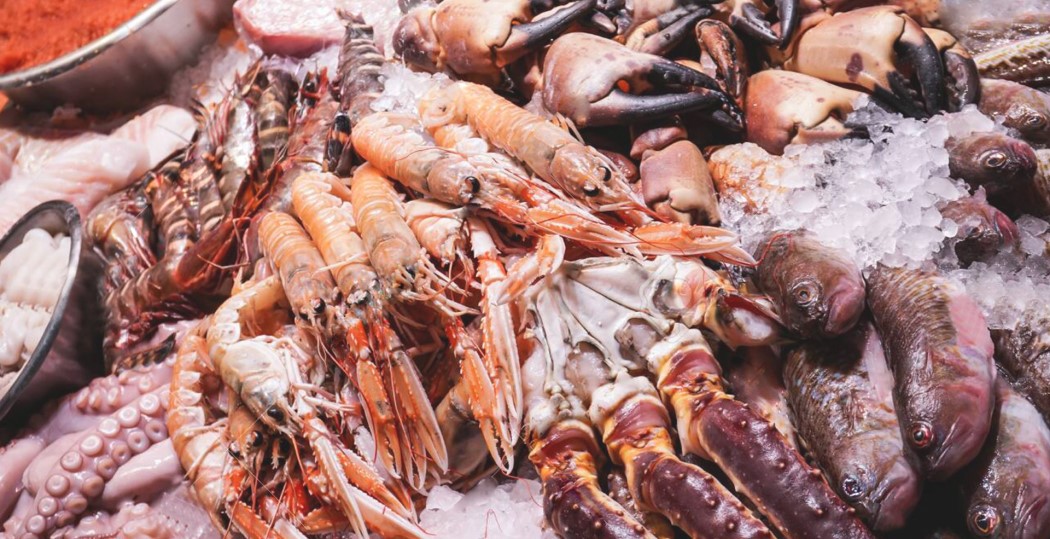
The global demand for seafood has been growing at a remarkable pace over the past few years. The global market for Seafood estimated at US$113.2 billion in the year 2020, is forecast to reach US$138.7 billion by 2027, growing at a CAGR (Compound Annual Growth Rate) of 2.9% over the period 2020-2027. The seafood market in the U.S. is estimated at US$6.3 billion in the year 2020. China, the world's second-largest economy, is forecast to reach a projected market size of US$53.5 billion by the year 2027 trailing a CAGR of 3.7% over the period 2020 to 2027. Among the other noteworthy geographic markets are Japan and Canada, each forecast to grow at 1.3% and 2.1% respectively over the 2020-2027 period. Within Europe, Germany is forecast to grow at approximately 1.6% CAGR.
The global seafood market can be segmented based on product categories such as Crustaceans, Molluscs, Fish, and other seafood. The seafood market consists of sales of seafood by entities (organizations, sole traders, and partnerships) that produce canned seafood, smoke, salt and dry seafood, eviscerate fresh fish, shuck and pack fresh shellfish, process marine fats and oils, and/or frozen seafood. Establishments known as floating factory ships that gather and process seafood into canned seafood products are also included in this Seafood Market. The companies in the industry package and distribute their products through various distribution channels to both individual customers and commercial establishments.
Fish processing establishments are using high-pressure processing (HPP) technology to improve operational efficiency. HPP is a non-thermal technology in which the fish is submerged in a liquid placed in a pressure vessel and uses pressures of about 6000 times the average air pressure at sea level to pasteurize fish meat. High-pressure processing replaces the need for heating fish produce and chemicals are used for fish preservation. It increases yield by 20-50% and saves processing time and costs. HPP effectively kills microbes and extends the shelf life of the processed fish by 2 to 4 times, without adversely affecting its freshness, flavour, colour, texture, and nutritional value.
Chefs have perfected new recipes and dishes primarily made with fish, prawns, and trout. The popularity of these recipes has helped in boosting demand within the global seafood market. The food industry must encapsulate seafood as an important part of its offerings. The need to reciprocate to the demand of consumers of all ages and preferences has popularised seafood across the globe. The use of tuna in making sandwiches, baguettes, and bagels has also given rise to fresh demand within the global seafood market. New seafood recipes are being introduced to people living in arid, non-coastal areas, and this is an important consideration from the perspective of market growth.
The last decade witnessed a rise in pescatarians – people who don’t eat meat but do eat fish and flexitarians - people who have primarily vegetarian diets but occasionally eat meat or fish. Now, a new trend is gathering steam: seaganism, where people follow a vegan diet but include sustainably sourced seafood for healthy extra protein and an occasional fleshy treat. Seagans not only add fish to mealtimes for variety but to take the benefit of high-quality omega-3 fatty acids that can be hard to source on a traditional vegan diet.
Fish chefs and food pioneers are reinventing two notable trends of the past decade from the meat industry – artisan charcuterie and nose-to-tail dining. In the seafood world, this translates to seacuterie and fin-to-gill eating. With the former, chefs from Australia to Ireland are whetting their knives and experimenting with the ways to cut, cure and serve raw fish slices. Driven by cost and sustainability concerns it was only a matter of time before chefs started widening the net to use every part of the fish. The possibilities are infinite and, rather like offal, often taste much better than they sound. During this decade, we can expect more chefs to move beyond fish-head soup and offer such fishy delights as barbecued salmon tongue, tartar or burgers made from scraped carcass, pan-seared halibut cheeks and collars, fish-eye crackers and aioli made from fried salmon skin oil. Some of these ideas take guts to cook, quite literally.
As people grow more and more health-conscious, plant-based food with wellness credentials tends to sell rapidly. Sales of seaweed, or sea vegetables, have skyrocketed in the past decade. Food entrepreneurs are adding it to everything from Sea Nuggets and Weed Burgers to seasonings, different kinds of butter, and sun-dried seaweed snacks. Seaweed is highly nutritious and delicious. Historically it has been consumed in Asia, but more people are getting a taste for seaweed in Western countries. Owing to the rapid growth of global seaweed production and its increasing economic importance, the sector must be managed sustainably.
It goes without saying that on this finite blue planet, we need to innovate to more efficiently and more sustainably utilise our marine renewable resources. A case in point is Kerecis, a company working in the regenerative-tissue market in the United States and around the world that is utilising fish skin to help prevent amputations caused by diabetic wounds and heal other types of tissue damage for patients. The sustainably sourced fish-skin graft provides a ‘platform’ rich in naturally occurring Omega-3 polyunsaturated fatty acids into which healthy new human skin can grow.
For Sri Lankan Seafood Exporters, these trends are important to identify the room for expansion, learn and practise more sustainable methods in harvesting fish, sharpen their quality assurance process, and discover unorthodox supply opportunities.
Sri Lanka’s seafood product sector has emerged as a quality exporter of a wide variety of fish, with the most popular of them being tuna. Sri Lanka’s rich and relished seafood of different varieties are available through an extensive network of exporters.